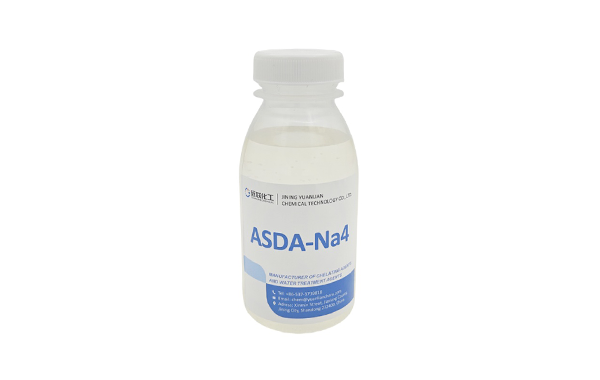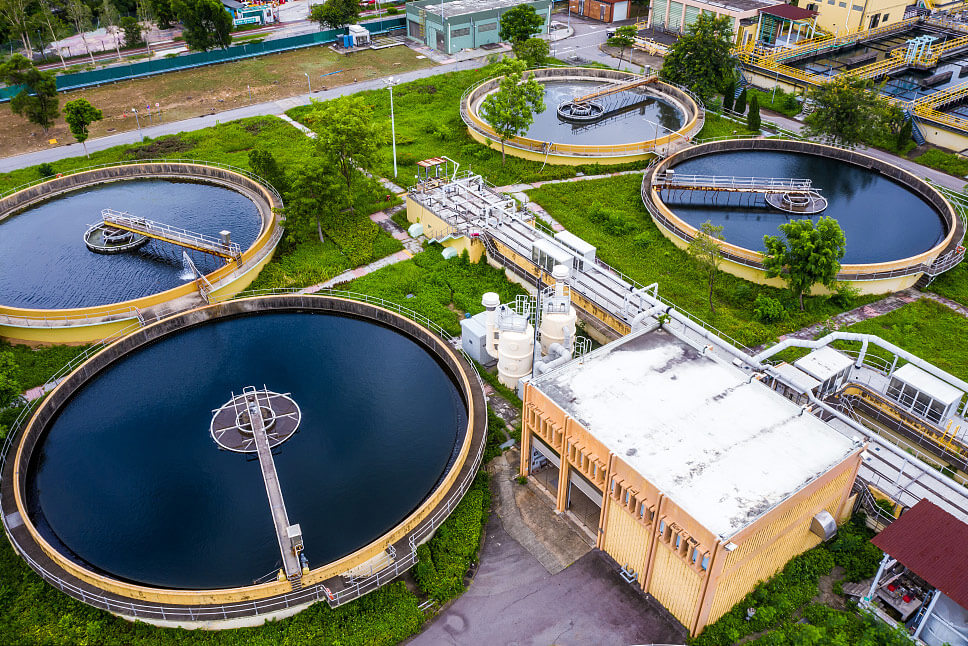
The Core of Green Chemistry: Tetrasodium Aspartyl Diacetate (ASDA)
Amid tightening environmental regulations and the global shift toward sustainable chemistry, traditional chelating agents face unprecedented challenges. Phosphorus-induced eutrophication and persistent pollutants like EDTA/NTA have accelerated demand for eco-friendly alternatives. Tetrasodium Aspartyl Diacetate (ASDA), with its phosphorus-free, readily biodegradable, and high-efficiency chelation properties, emerges as the next-generation solution for green manufacturing.
I. What is ASDA? Decoding the Science
Tetrasodium Aspartyl Diacetate (CAS: 34612-80-1), also known as Tetrasodium Iminodisuccinate or ASDA, is synthesized from L-aspartic acid—a natural amino acid. Its molecular formula (C₈H₇NNa₄O₈) underpins exceptional environmental safety.

Key Attributes:
-
Physical Profile: Yellowish transparent liquid; Density ≥1.20 g/cm³ (20°C); ≥55% solid content; pH ≥7 (1% aqueous solution).
-
Eco-Advantage: Zero phosphorus, >90% biodegradability (OECD 301B), no bioaccumulation.
-
Performance: Broad pH stability (1–14), chelates Ca²⁺/Mg²⁺/Fe²⁺ at 550 mg CaCO₃/g.
II. Applications: Powering Sustainable Industries
ASDA replaces EDTA, DTPA, and STPP across sectors:
1. Home & Personal Care
-
Hard water tolerance: Prevents soap scum in detergents.
-
Foam stabilization: Enhances lather longevity in shampoos.
-
Eco-compliance: Meets EU Detergent Phosphorus Regulation (EC 648/2004).
2. Industrial Cleaning & Water Treatment
-
Scale inhibition: Protects RO membranes, boilers, and cooling towers.
-
Bleach activator: Stabilizes peroxides in textile cleaning.
-
Metal passivation: Reduces corrosion in automotive/industrial fluids.

3. Textile Processing
-
Metal ion control: Prevents dye oxidation for uniform coloration.
-
Oligomer dispersion: Minimizes fabric contamination during dyeing.
4. Emerging Uses
-
Agriculture: Micronutrient chelation in fertilizers.
-
Construction: Concrete set retarder.
-
Electronics: Wafer cleaning agent in semiconductor fabrication.
III. Market Outlook: The Rise of Green Chelators
The global chelating agents market (valued at $2.8B in 2022) will reach $3.3B+ by 2028, driven by biodegradable alternatives. China’s 38,000-ton L-aspartic acid output (2022) positions it as a key ASDA supplier. Regulatory tailwinds—including EPA wastewater guidelines and REACH restrictions on EDTA—further boost ASDA adoption.
IV. Yuanlian Chemical: Innovating Sustainable Solutions
Shandong Yuanlian Chemical delivers high-purity ASDA with:
-
≥550 mg CaCO₃/g chelation capacity
-
Non-GMO raw materials
-
ISO 14001-certified production
Our green chelator portfolio includes:
We provide custom formulation support to help brands achieve sustainability targets without compromising performance.
Conclusion: ASDA—Where Performance Meets Planet
From lab to real-world applications, Tetrasodium Aspartyl Diacetate (ASDA) proves that industrial efficiency and ecological responsibility coexist. As industries worldwide phase out legacy chelators, ASDA offers a future-proof pathway.
Yuanlian Chemical empowers your green transition:
Cleaning redefined. Chemistry respected. Future secured.
Yuanlian Chemical specializes in the production of polyaspartic acid (PASP),tetrasodium iminodisuccinate(IDS), GLDA, MGDA etc. with stable quality and excellent quantity!





Contact us